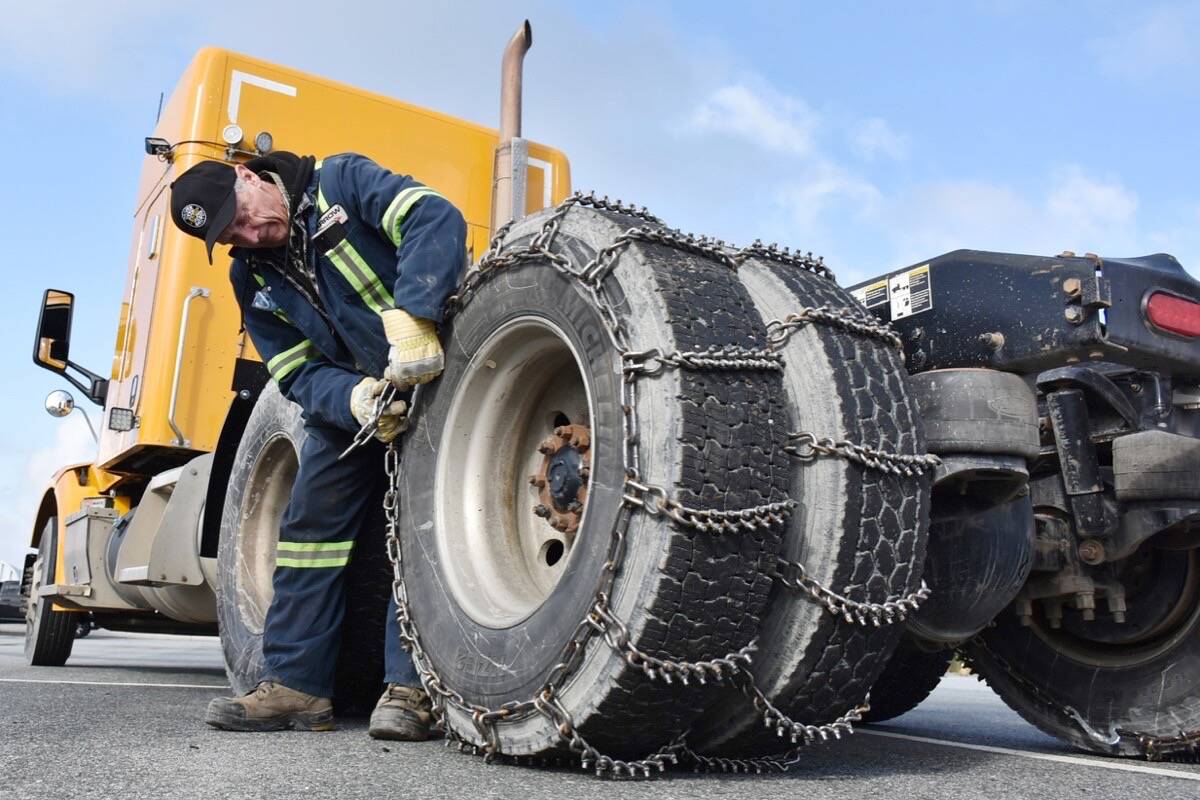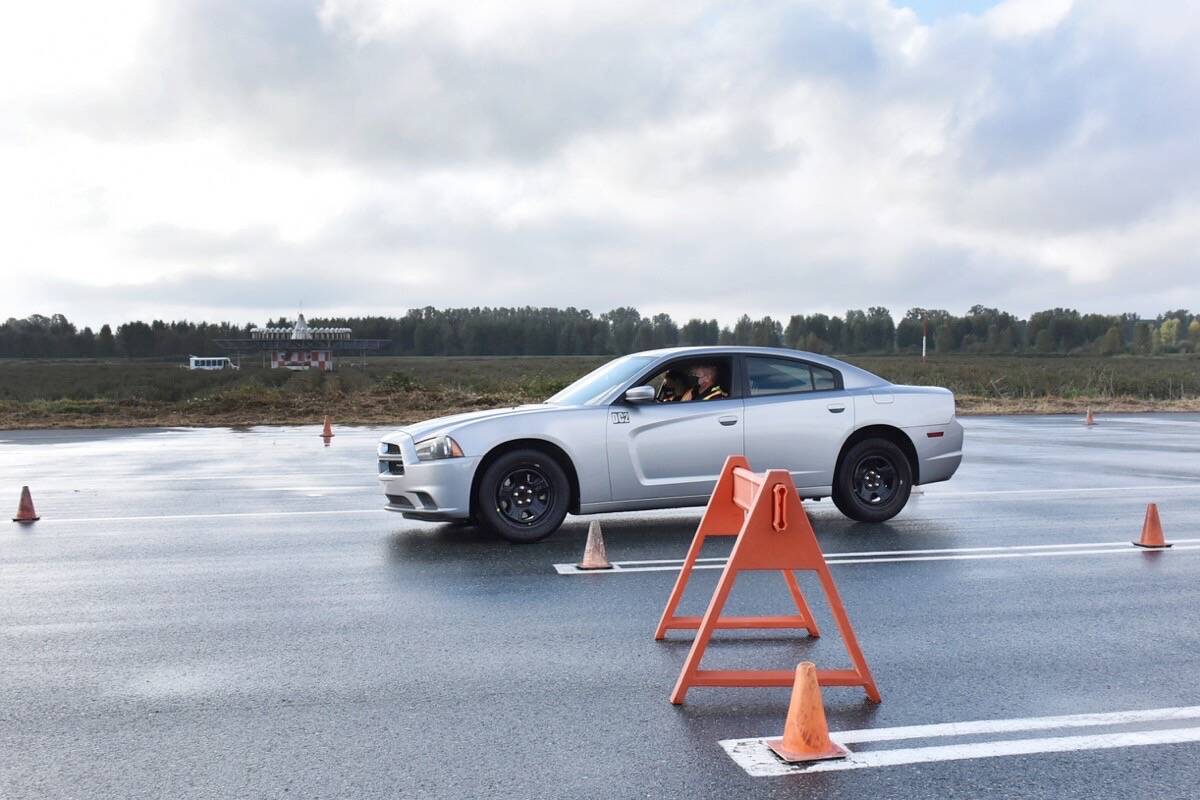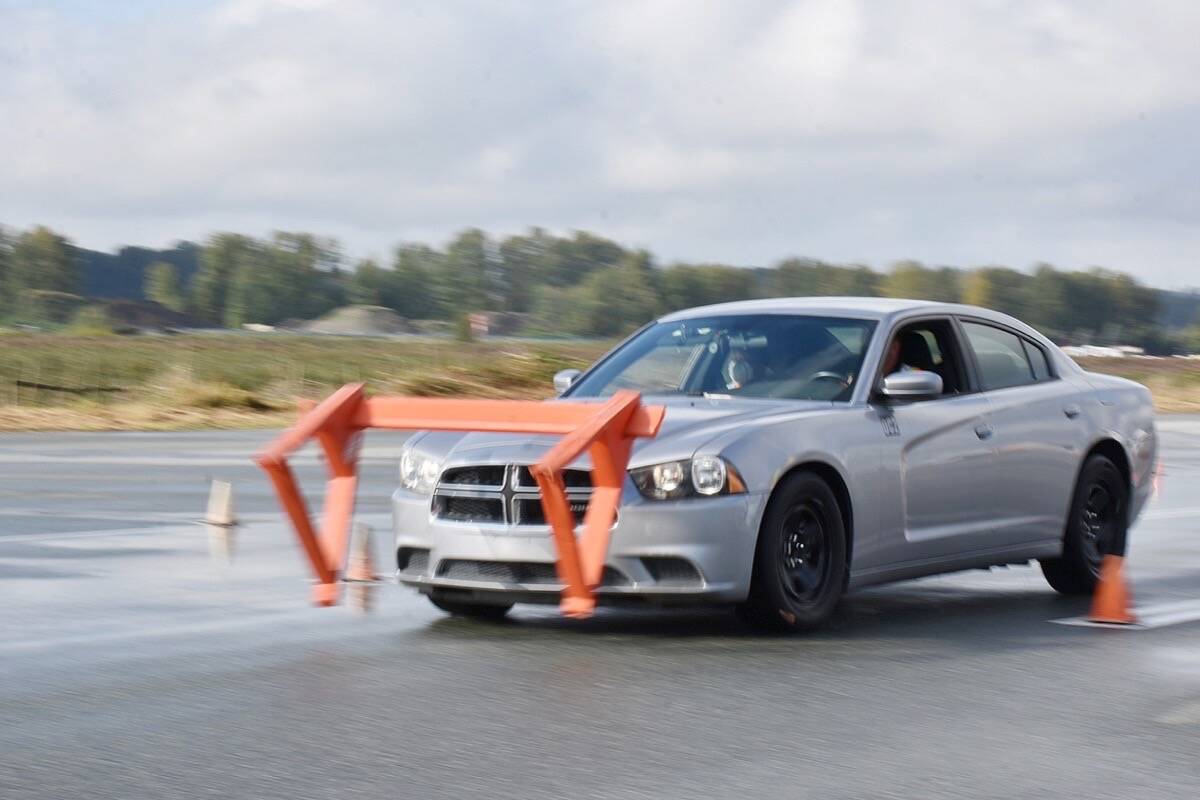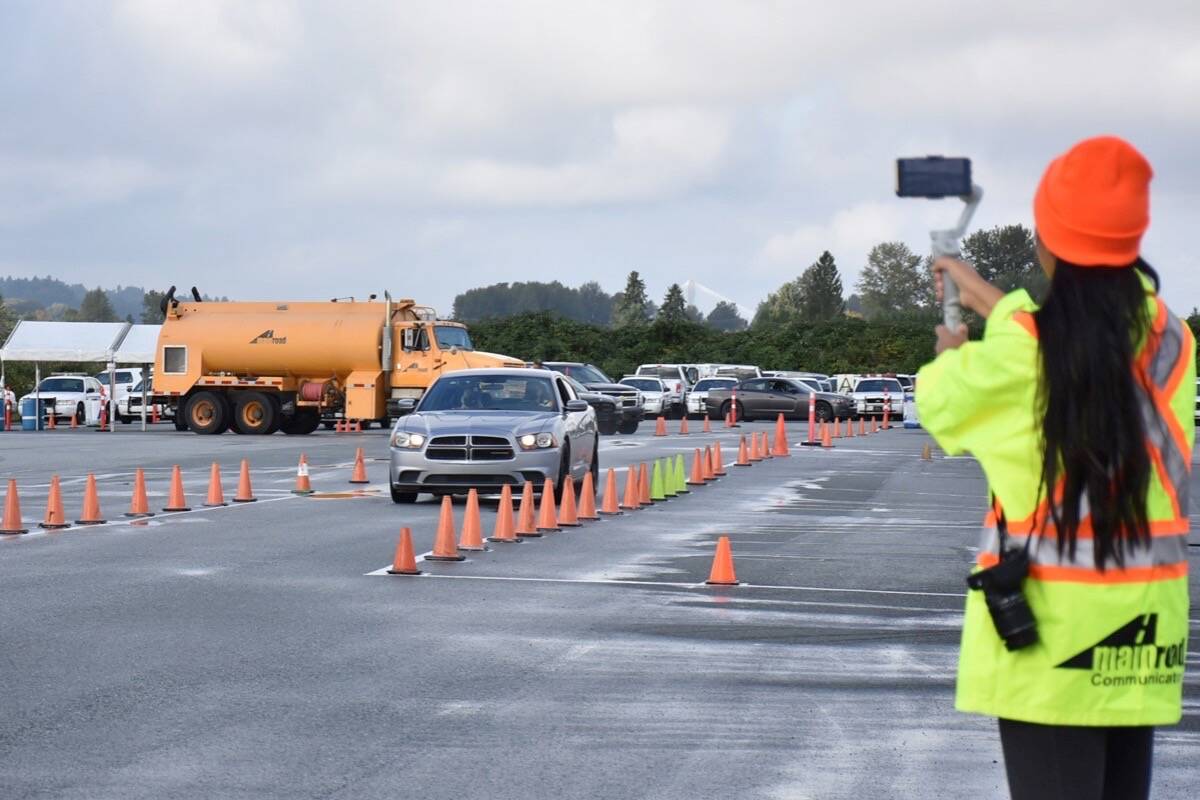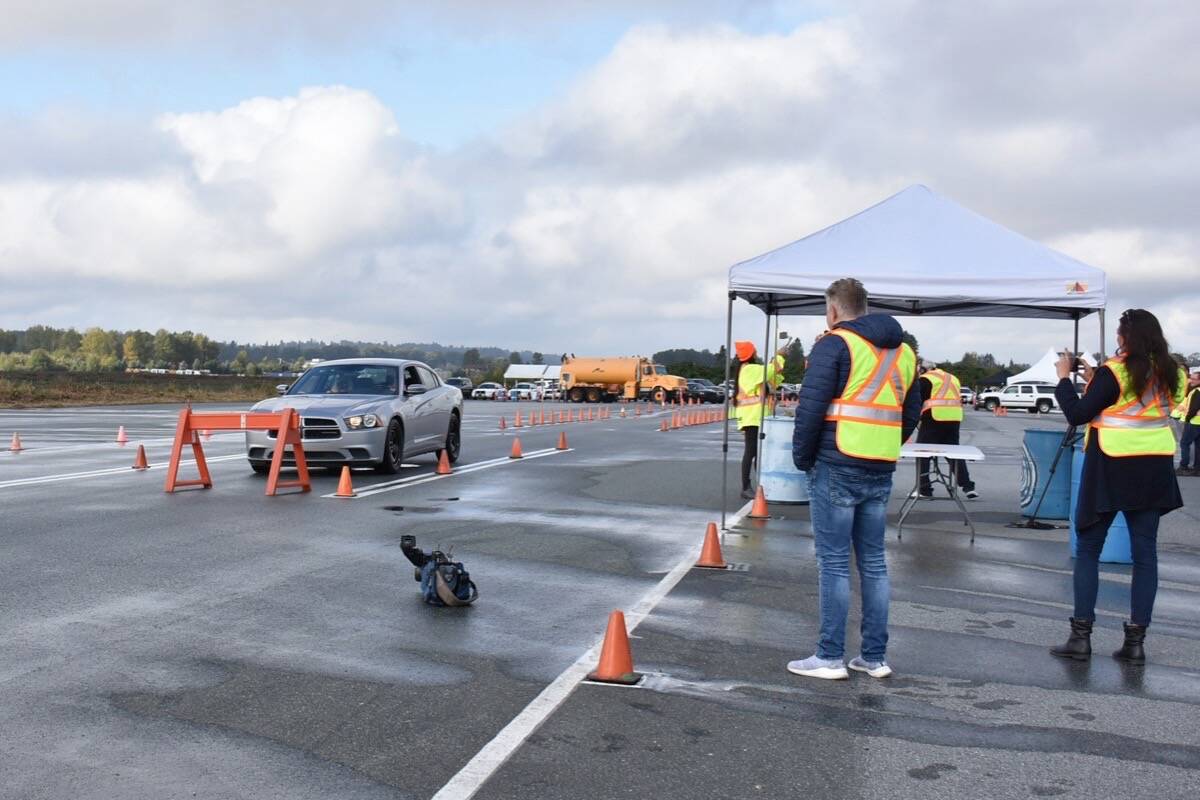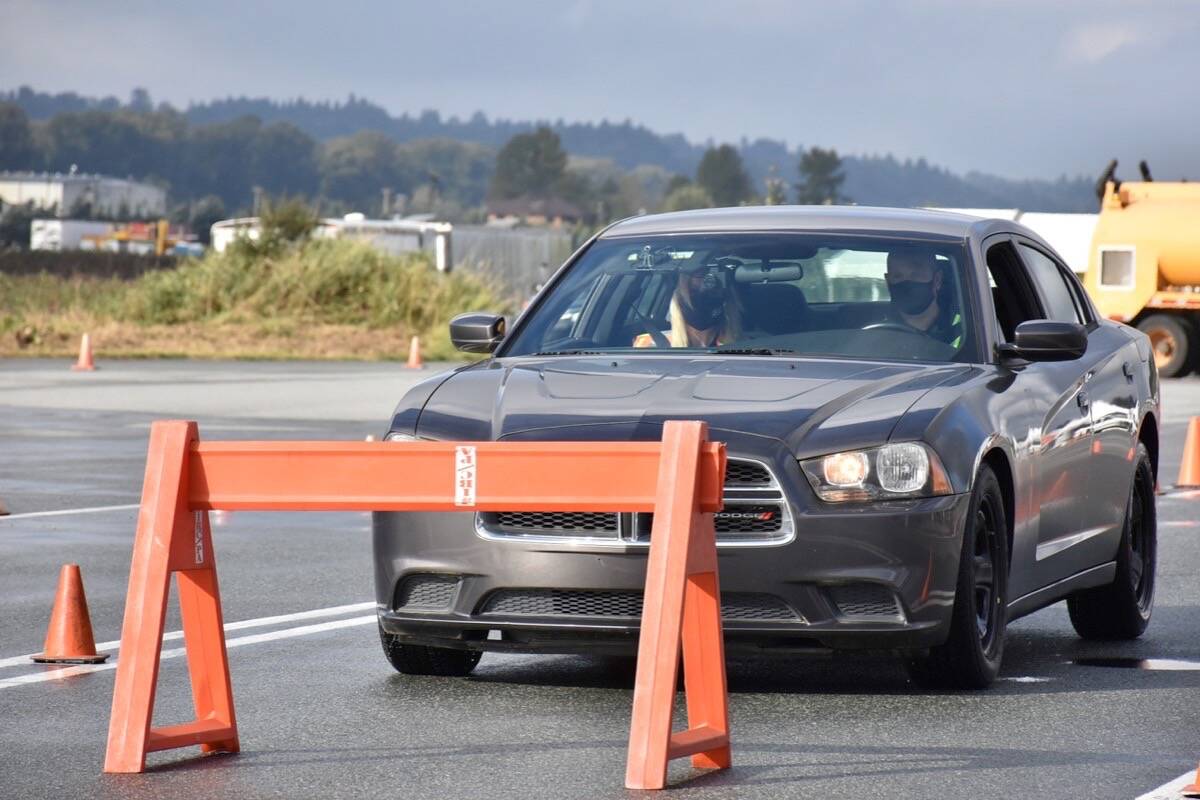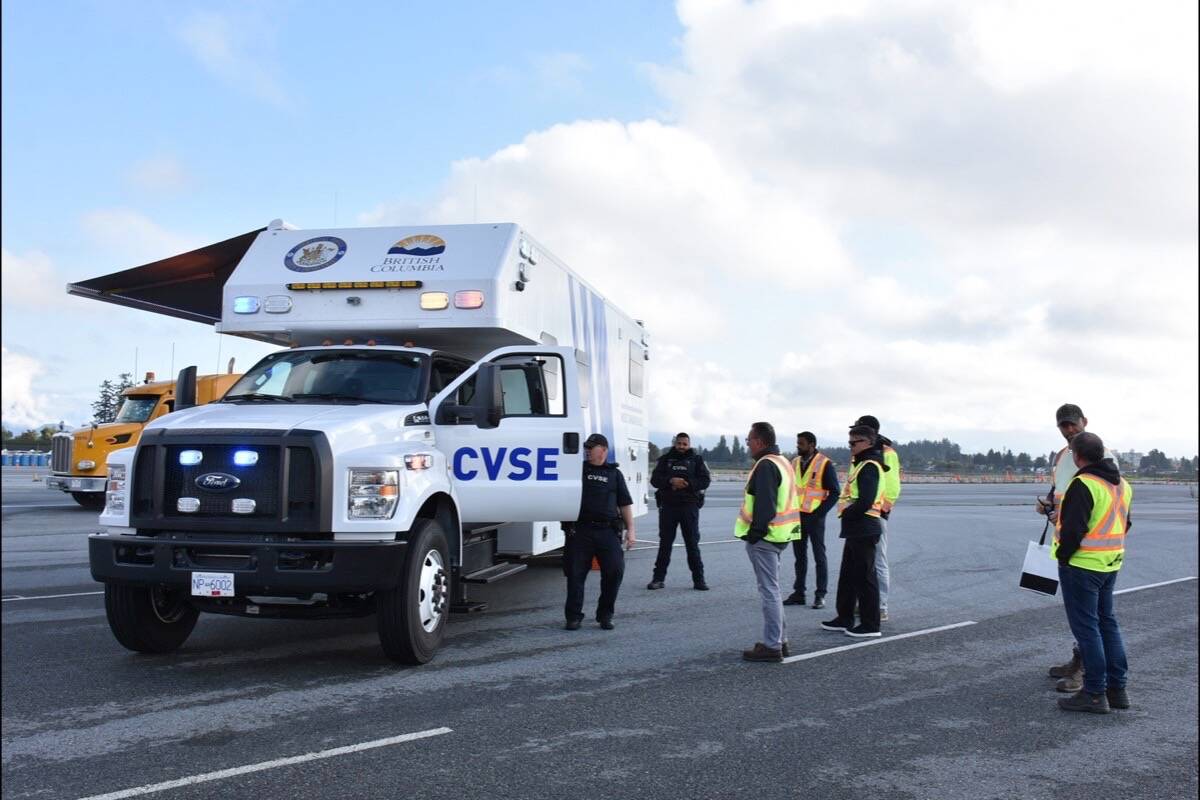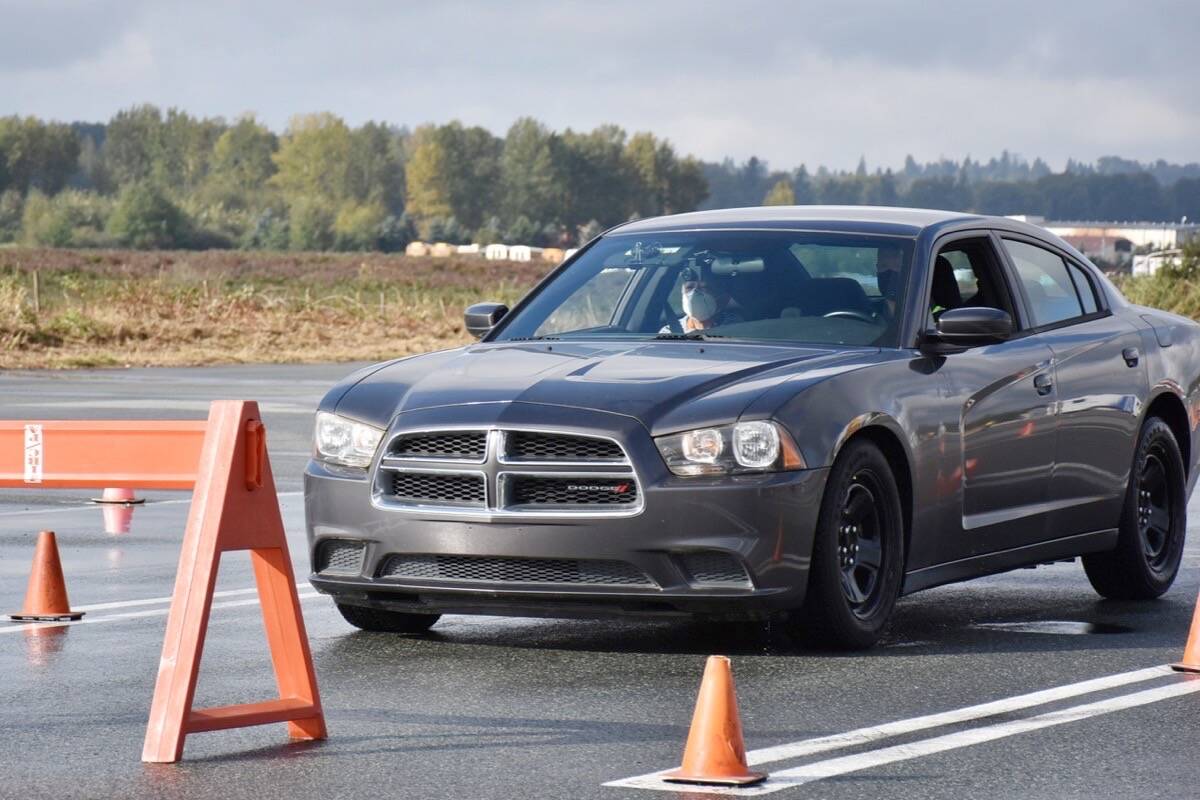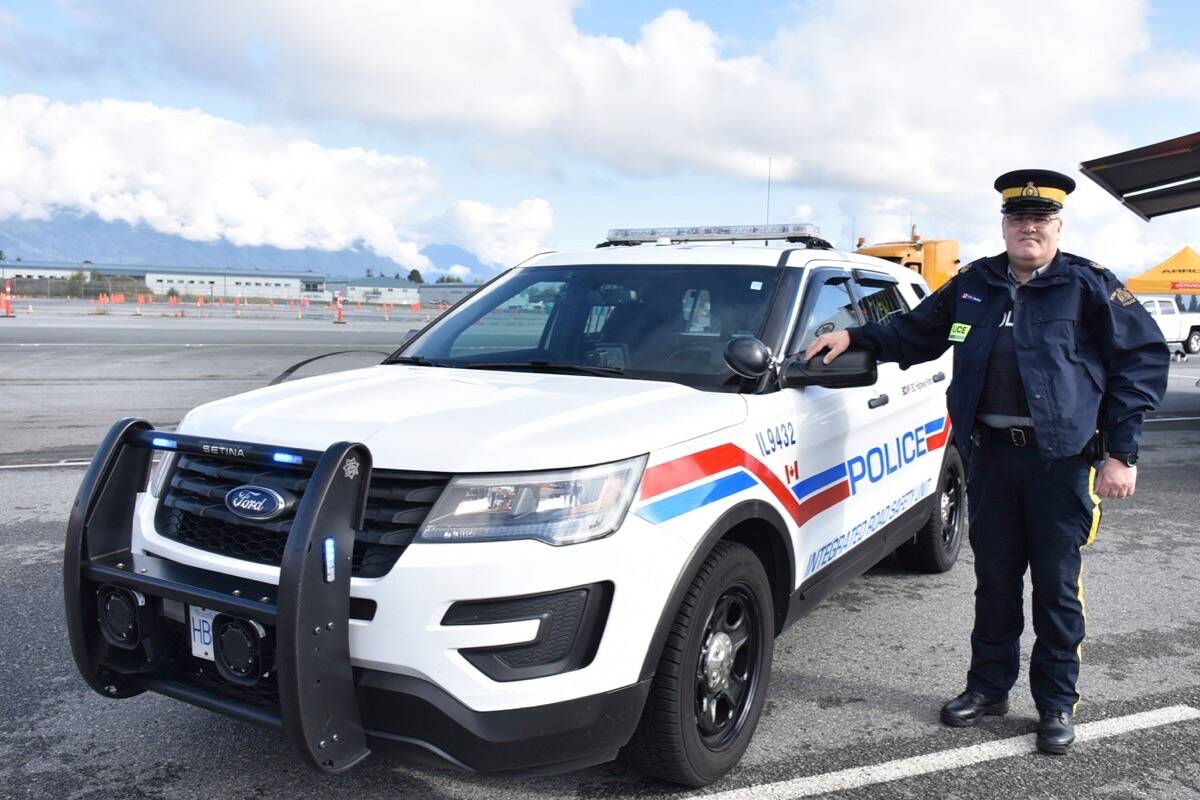Louise Yako was both nervous and curious as she sat down beside driving instructor Brian Lequesne for a winter tire demonstration at the Justice Institute of BC Driver Education Centre in Pitt Meadows Friday morning.
Yako, program director for Road Safety At Work and spokesperson for the 13th annual Shift Into Winter campaign, was the passenger in the vehicle during a driving demonstration using two different sets of tires under two different circumstances that could be faced by drivers in winter conditions.
Justice Institute of BC driving instructor Lequesne along with lead instructor Norman Prosch showed how mud and snow tires with poor tread compared with three-peaked mountain/snowflake winter tires in both a braking and evasive manoeuvre exercise in wet conditions.
Prosch advised that since they couldn’t control the temperature, they were using water and speed to showcase the differences in tires.
Yako described the vehicle with the poor treads as wobbly as it got up to speed down the straightaway at 65 km/h. And, she said, when the driver performed the evasive manoeuvre and braking exercise, the car felt “uncontrolled”.
“When Brian was driving me with the winter tires, you could feel there was much better grip on the pavement,” she said.
Yako emphasised the urgent need for the Shift Into Winter campaign.
“Regardless of the reason you drive the chances of being injured or killed in a motor vehicle crash in British Columbia dramatically increases during the winter months,” she told the crowd gathered for the demonstrations.
“The number of casualty crashes due to driving too fast for the conditions more than doubles from fall to winter. The risk of being in a workplace motor vehicle crash and being injured and off work increases by 27 per cent during November through January,” she noted.
READ MORE: Winter tires should be installed by next Friday, October 1
Crashes are preventable, added Yako, listing tips by the Winter Driving Safety Alliance some of which include: planning ahead; knowing the weather conditions before you leave; driving to weather conditions; using winter tires; postponing a trip when weather conditions are poor; making sure the vehicle has had a pre-winter maintenance checkup; carrying an emergency kit with non-perishable food, blankets, and first aid supplies; and keeping at least four seconds behind the vehicle in front.
ALSO: Winter tires required on majority of B.C. highways until end of March
To be considered legal, said Yako, winter tires must have a tread depth of at least 3.5 mm. Tire chains can also be used to comply with the winter tire requirement that went into effect on Friday, Oct. 1, where all vehicles on designated highways in the province must have winter tires on.
The campaign also serves as a reminder to employers that they have a legal responsibility to ensure the health and safety of their employees when they are driving for work – regardless of whether staff are driving their own vehicle or a company owned vehicle, Yako added.
Prosch noted that it is easy to become complacent on the south coast and think that your tires are good enough just because they are getting you around.
“But as soon as you leave the Lower Mainland it’s very important that you consider the tires you’re operating on,” he warned.
Shift Into Winter is a campaign put on by WorkSafeBC, Justice Institute of BC, the Province of BC, Road Safety At Work, and ICBC.
Have a story tip? Email: cflanagan@mapleridgenews.com
Like us on Facebook and follow us on Twitter.
